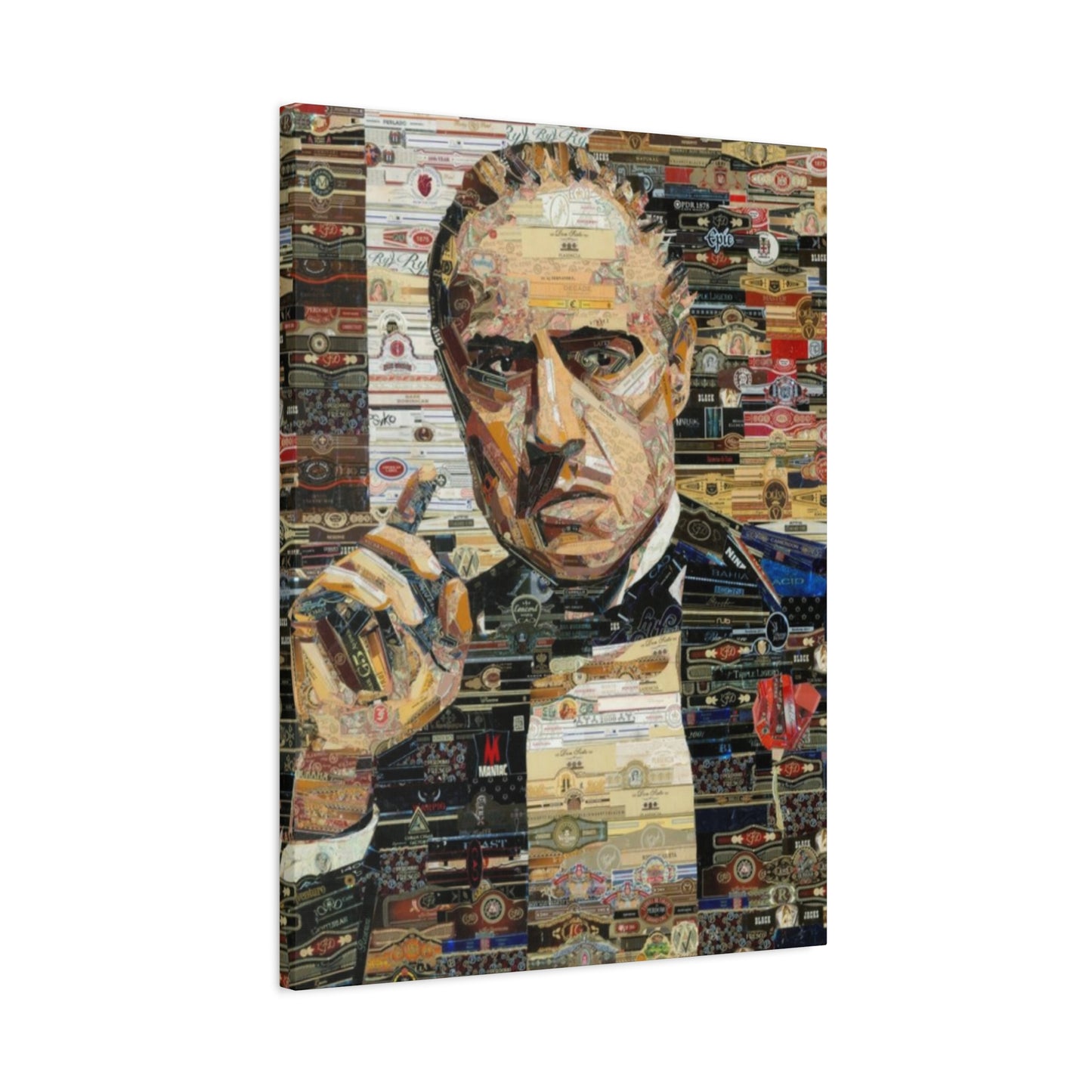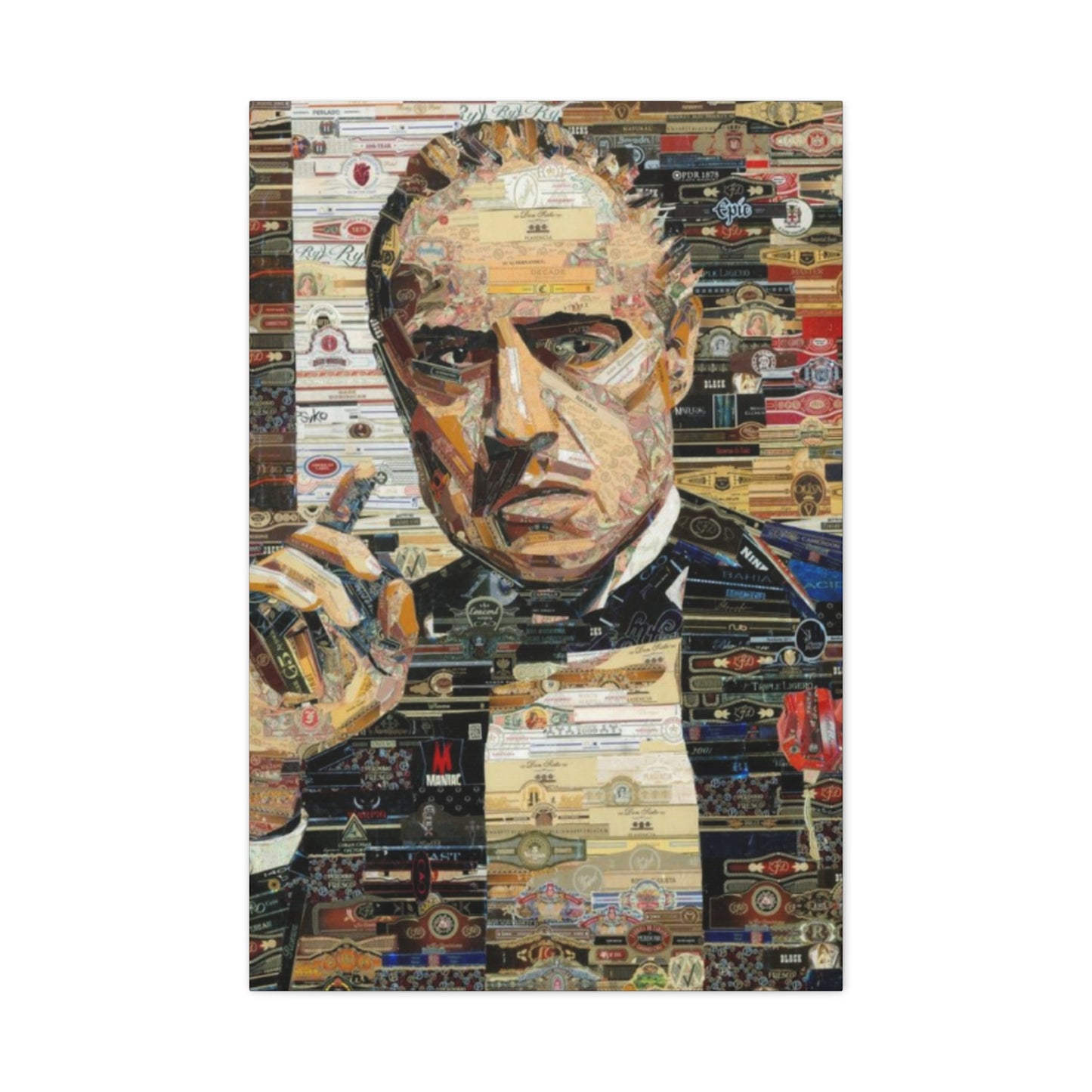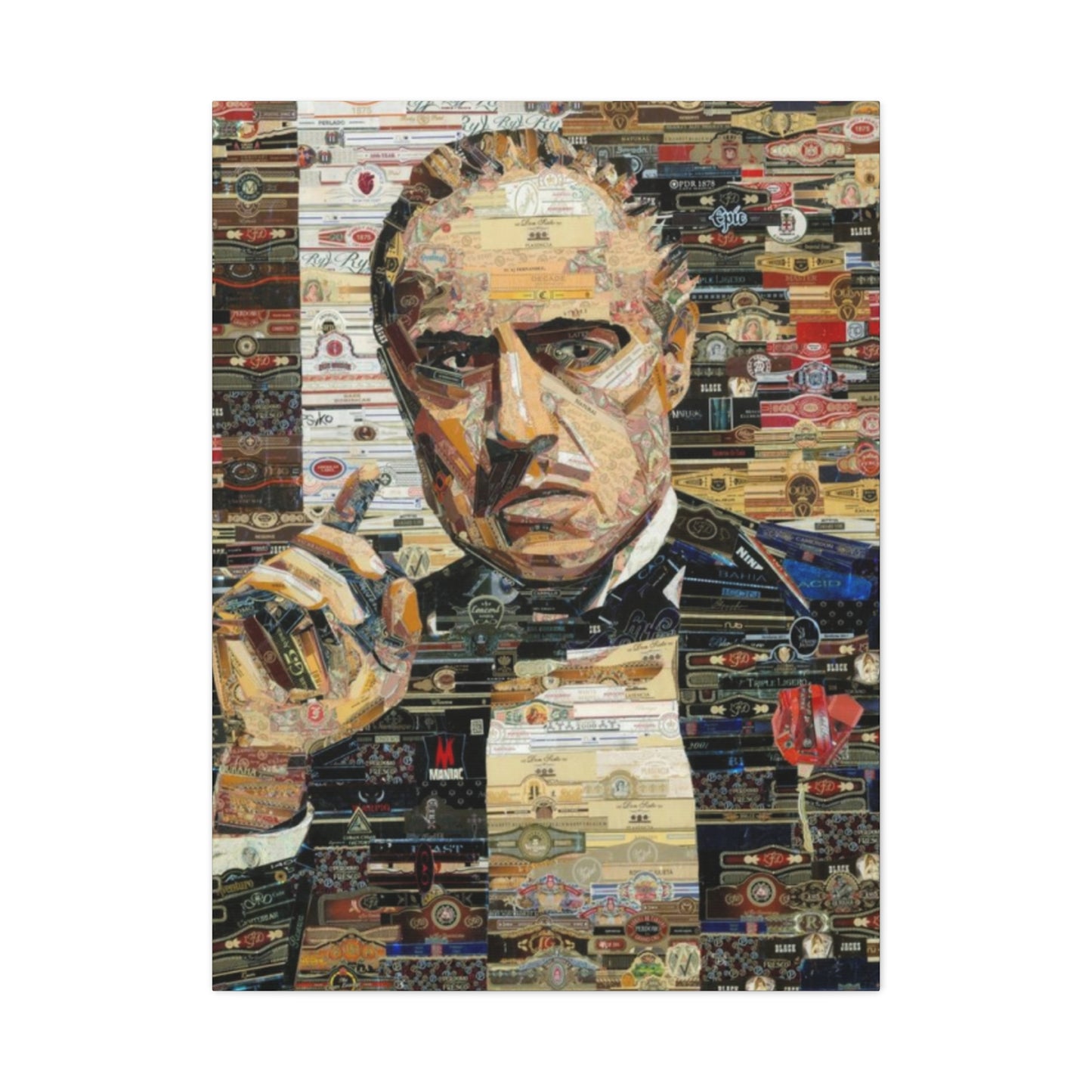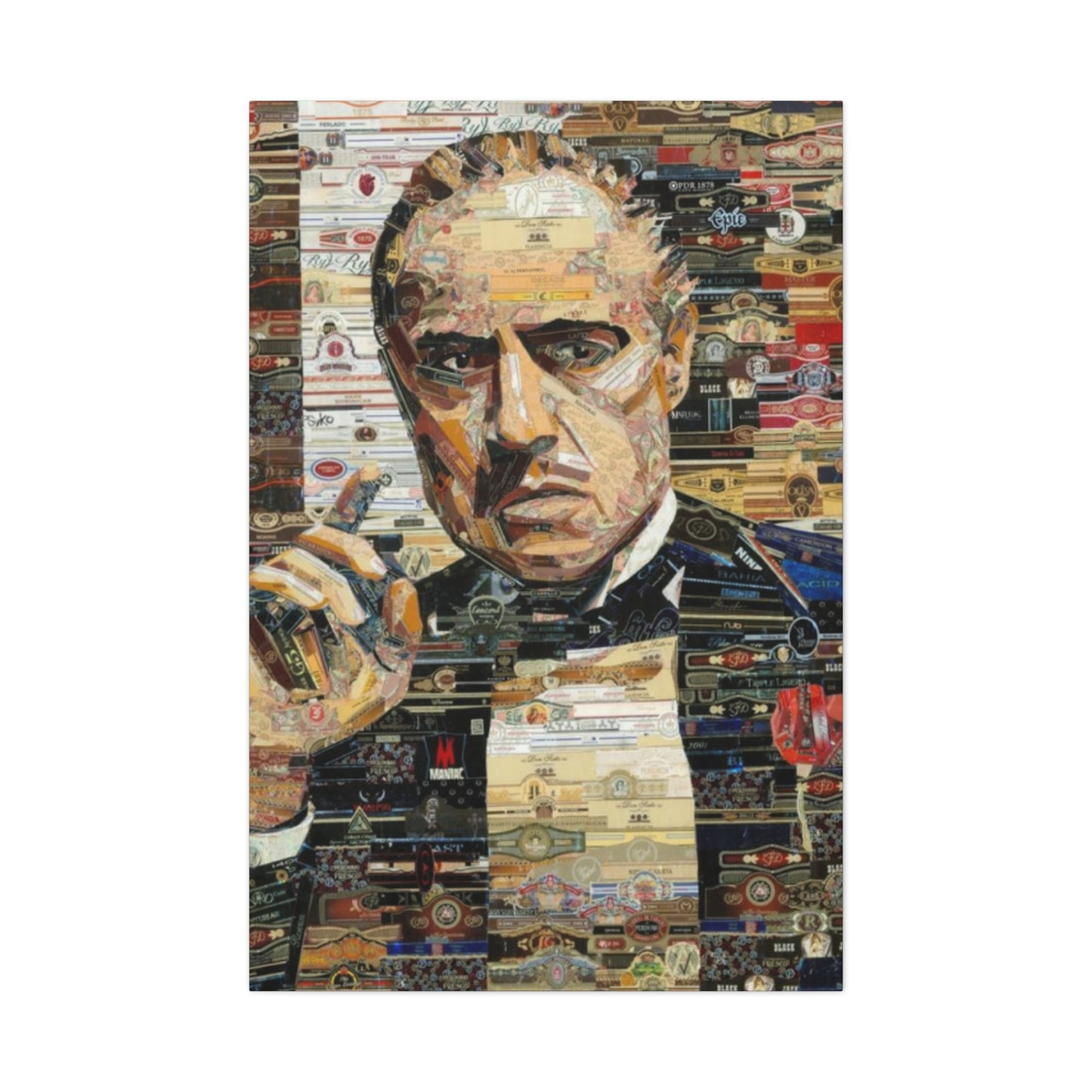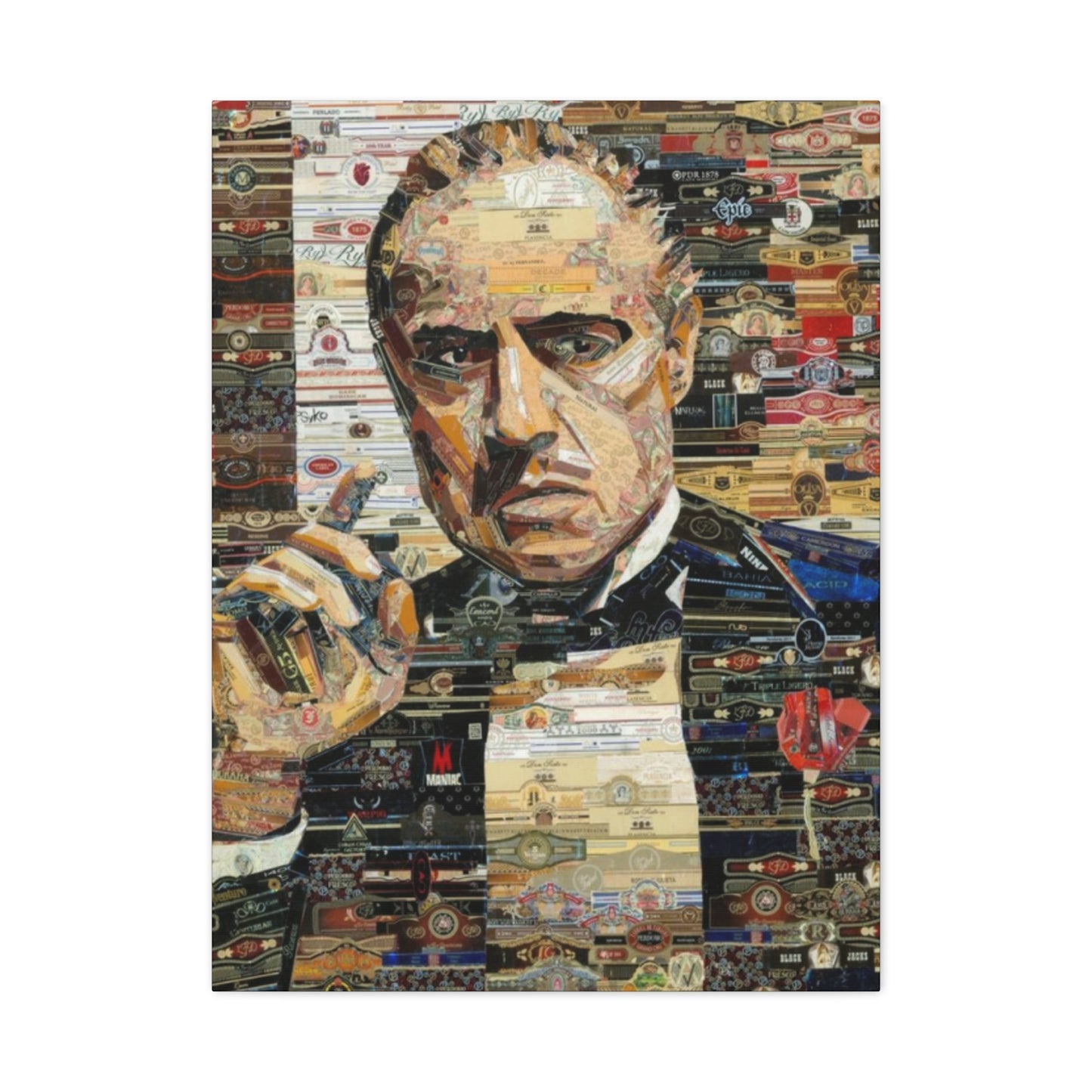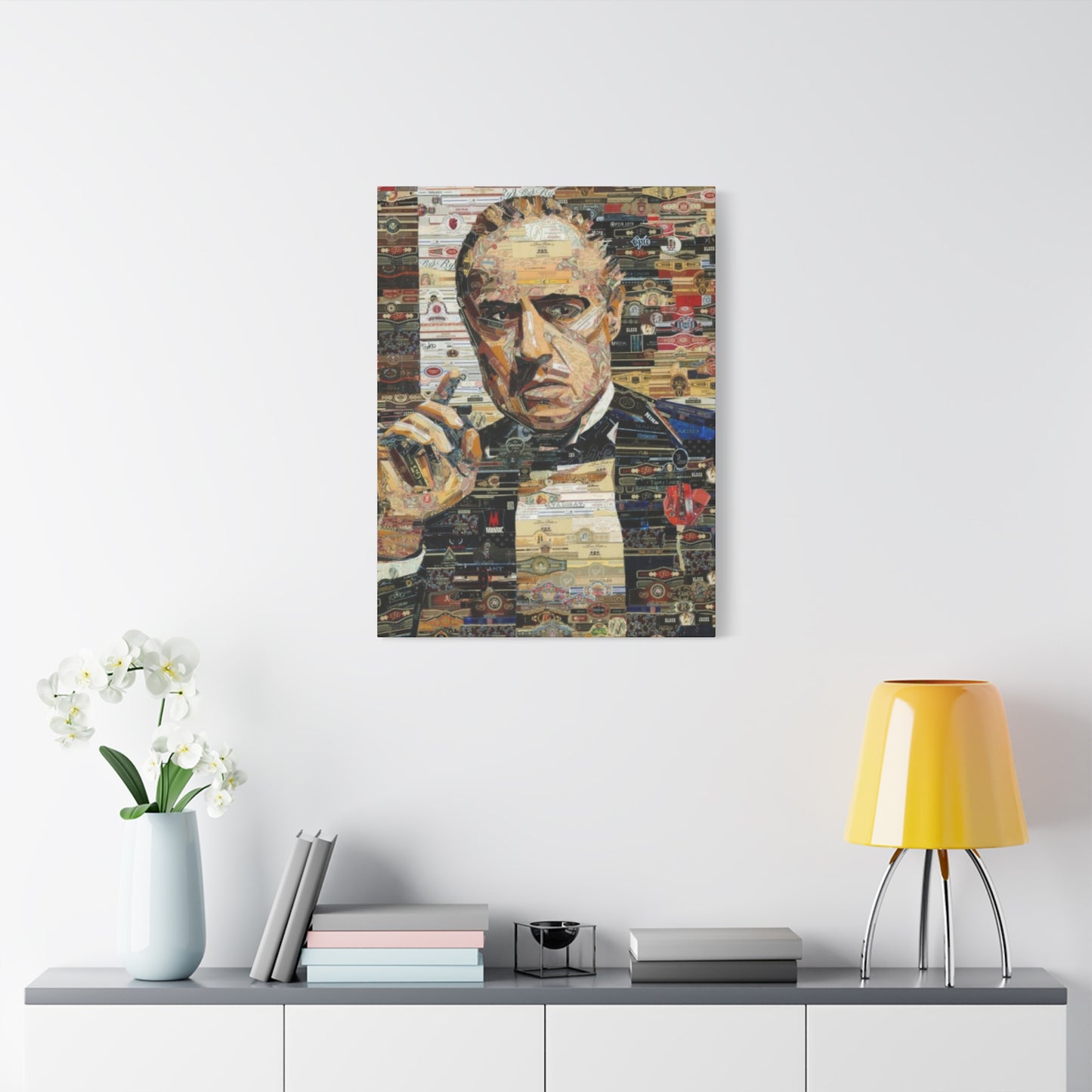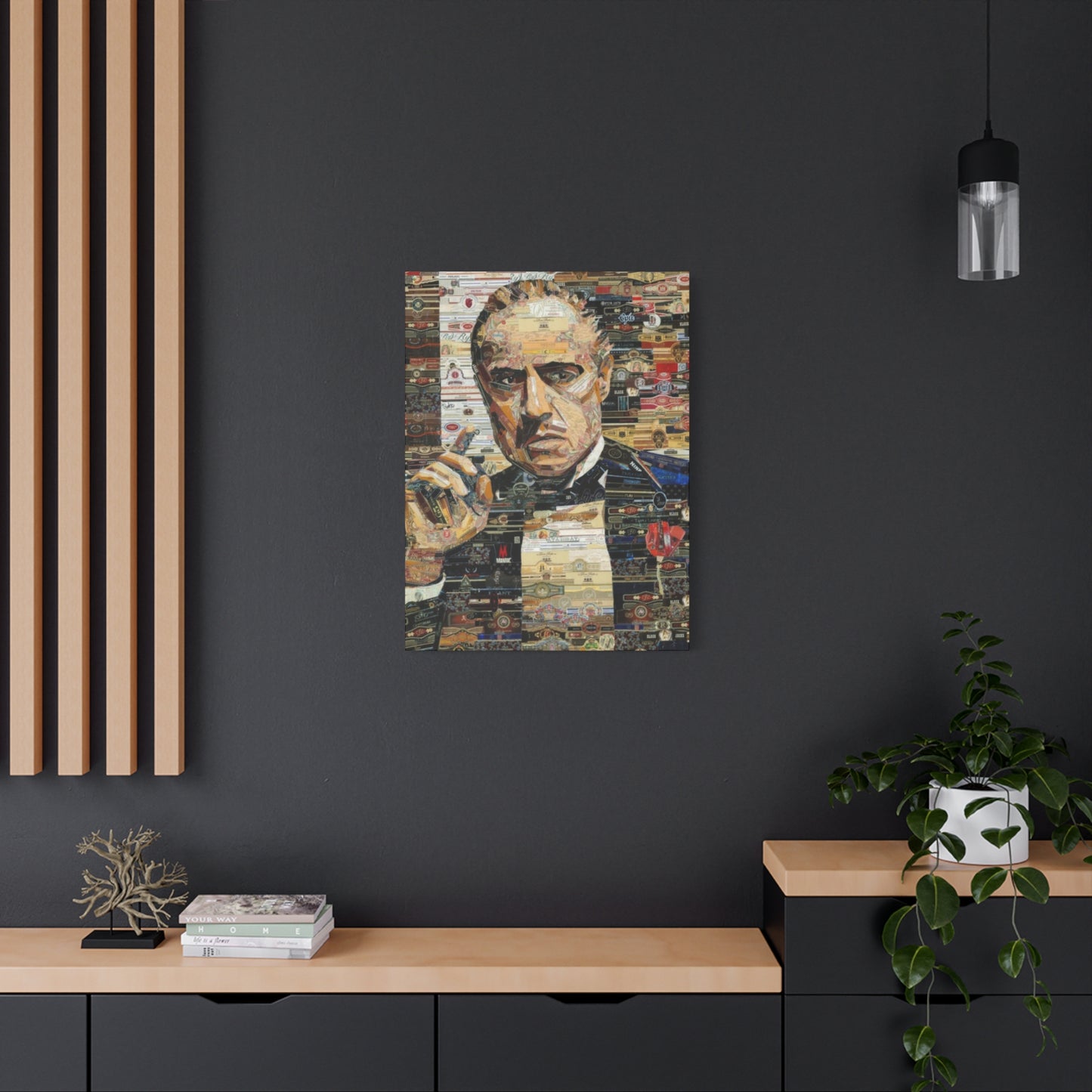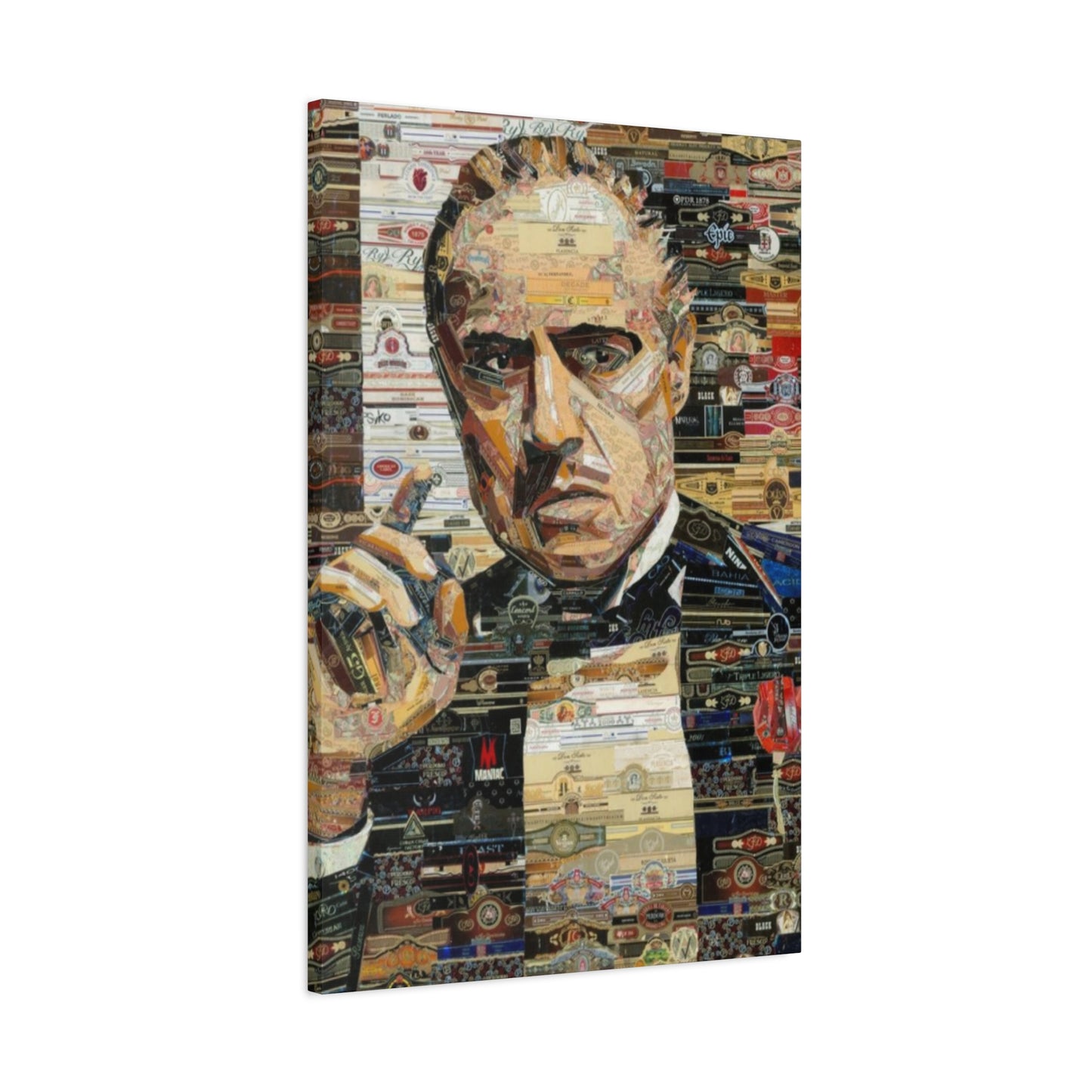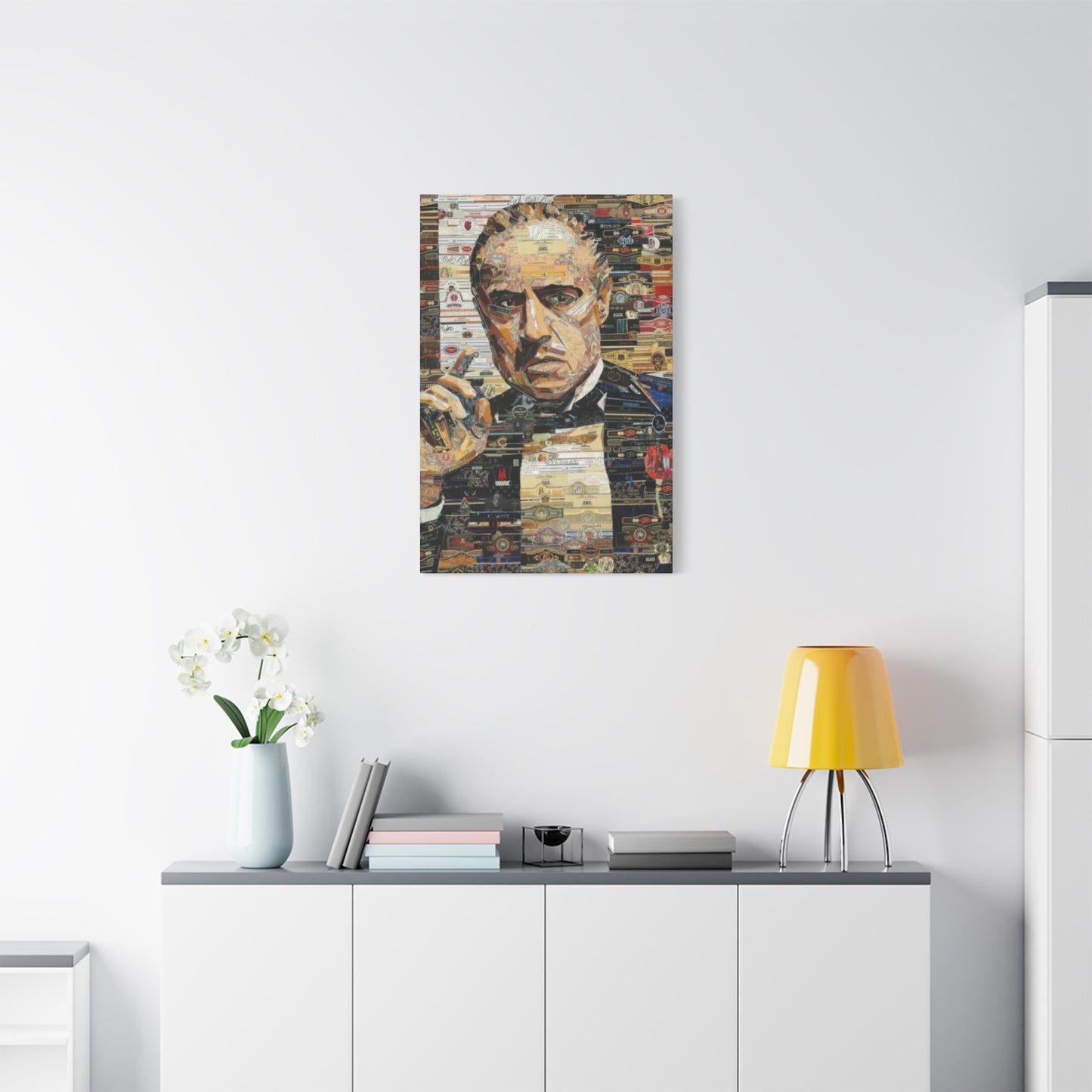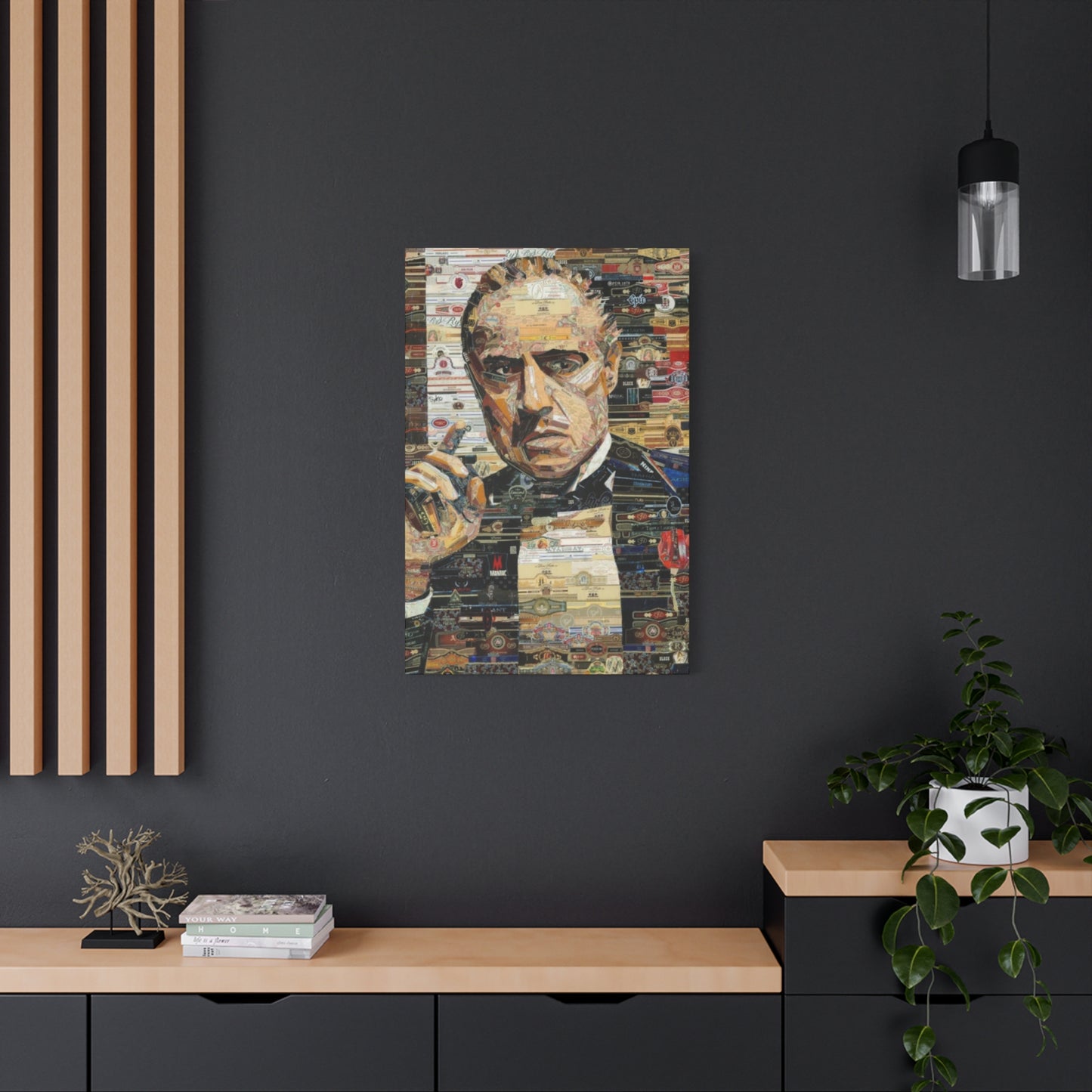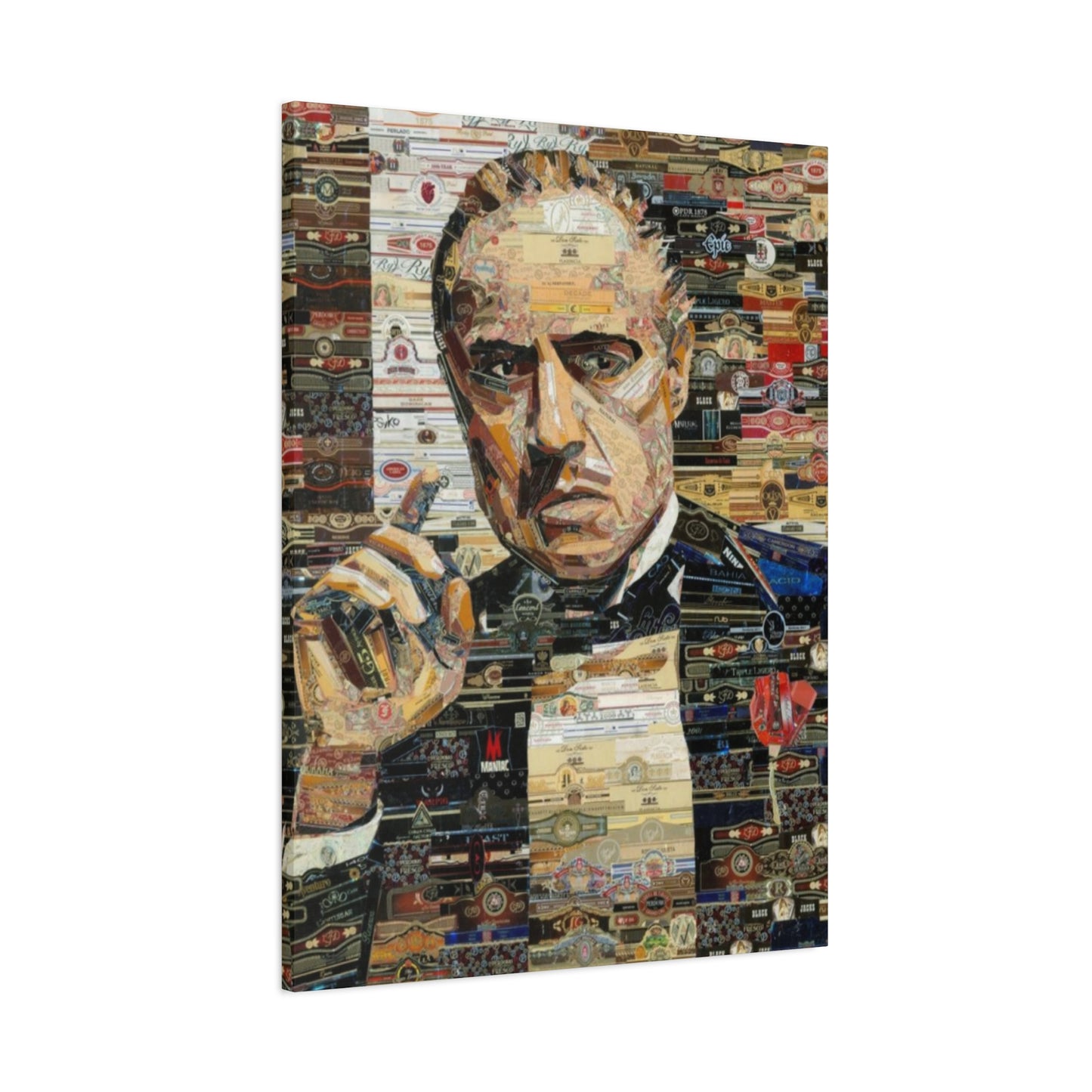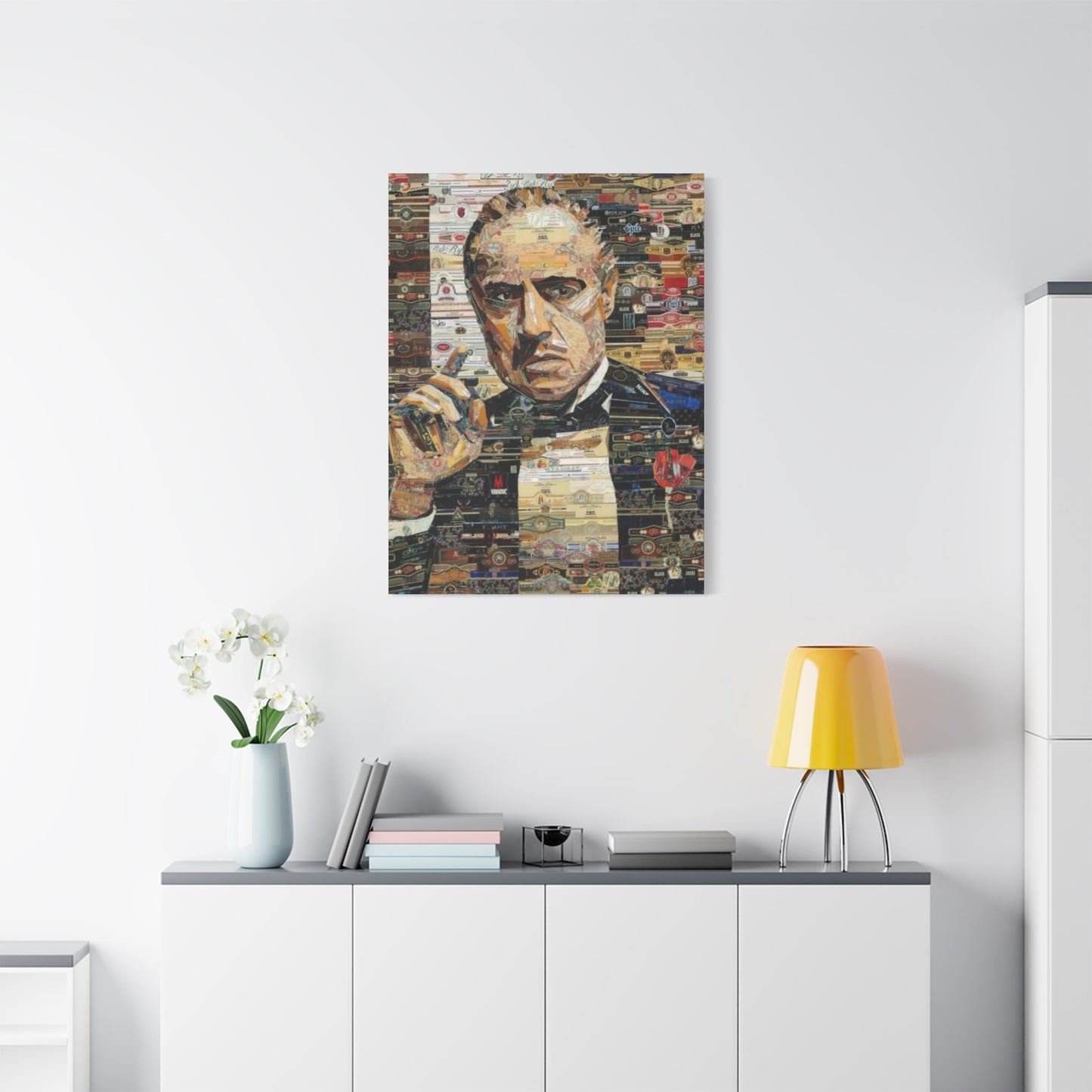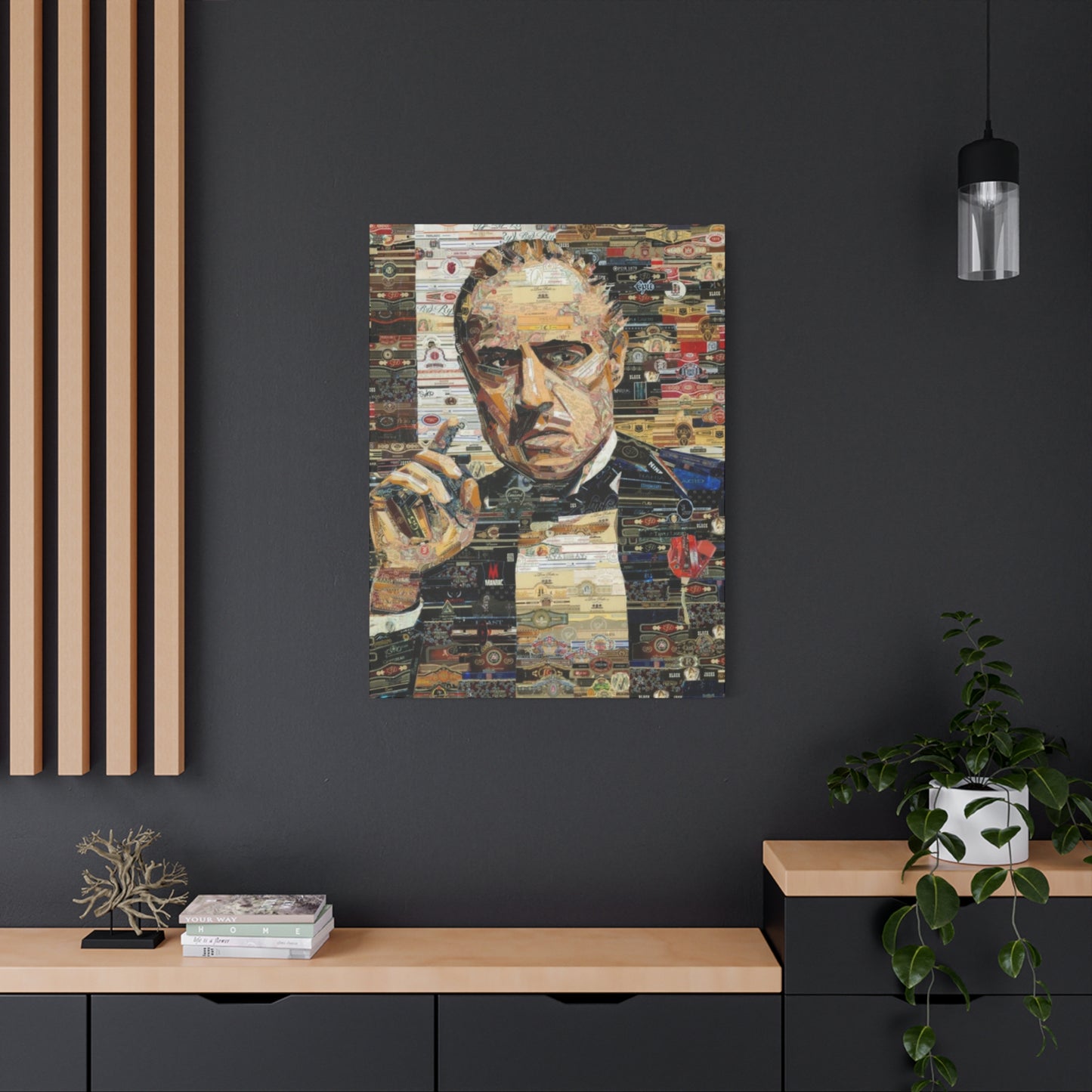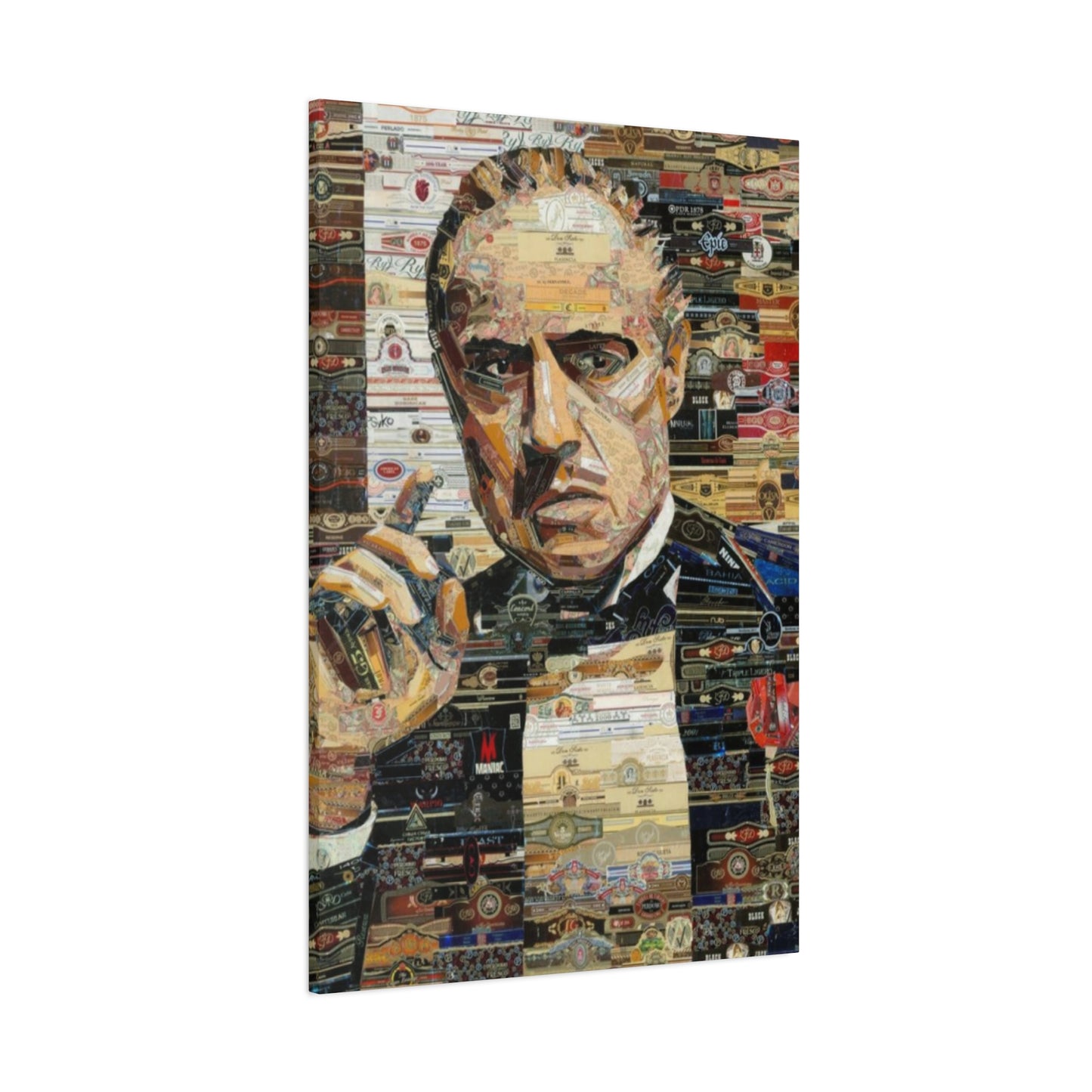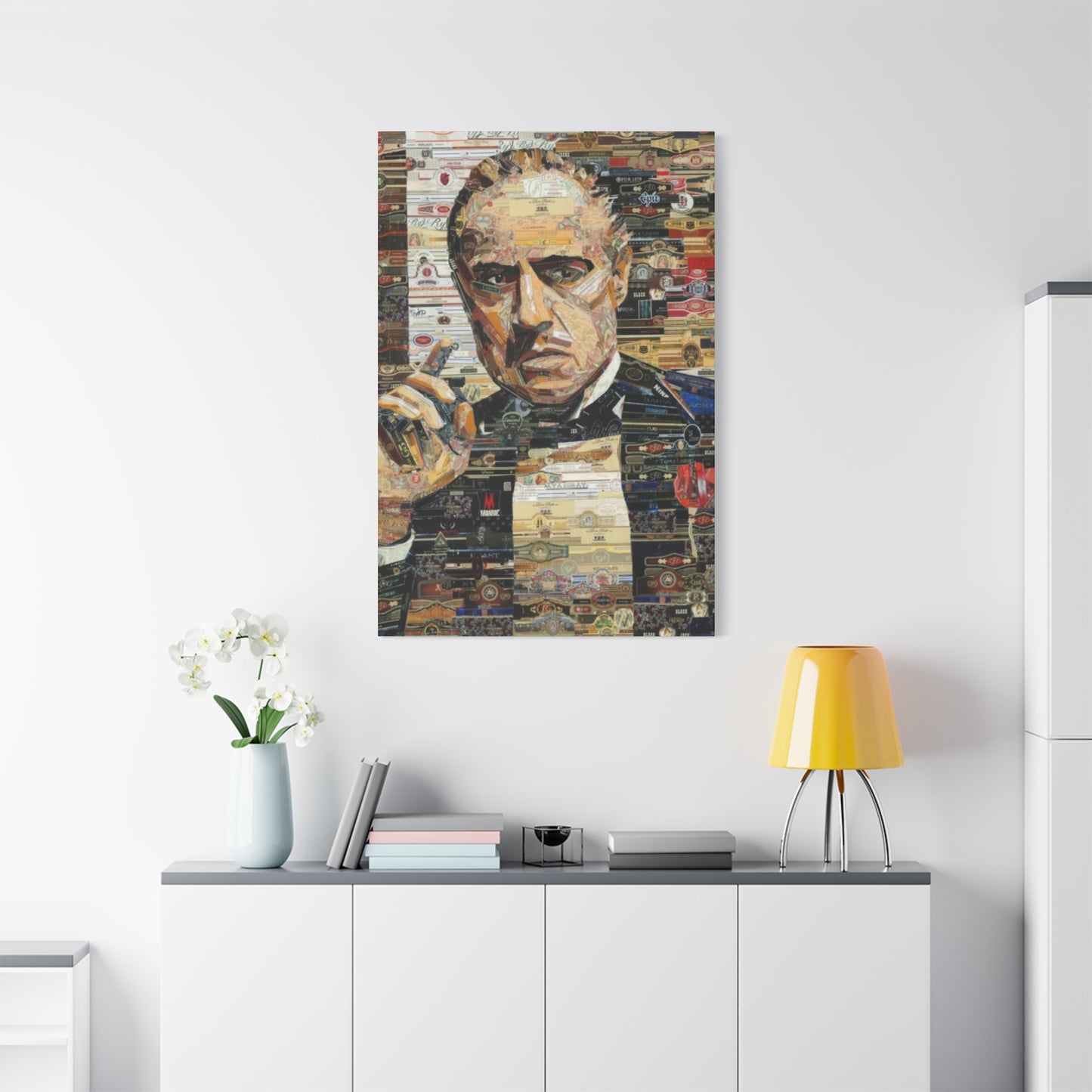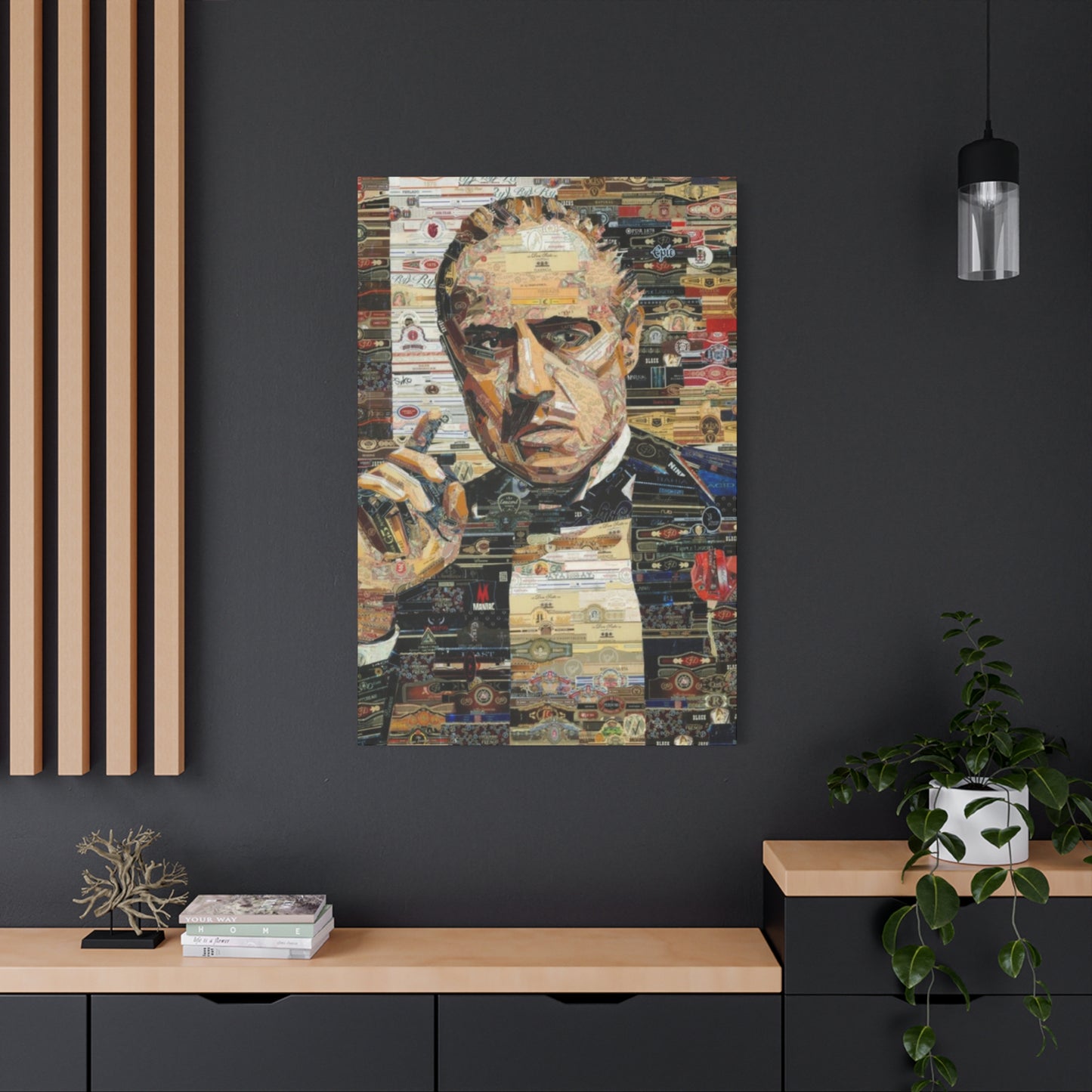Godfather Wall Art: Creating Cinematic Elegance in Your Man Cave
The legendary trilogy that redefined cinema continues to captivate audiences decades after its release. For enthusiasts seeking to infuse their personal retreats with cinematic sophistication, incorporating themed artwork creates an atmosphere of timeless elegance and masculine authority. This comprehensive exploration delves into the artistry of transforming ordinary rooms into extraordinary sanctuaries that pay homage to one of filmdom's greatest masterpieces.
Creating a Classic Mafia Mood with Godfather Prints
Establishing an authentic atmosphere requires careful consideration of visual elements that capture the essence of organized crime's golden age. The world depicted in Coppola's masterpiece revolves around power, respect, and family loyalty, themes that translate beautifully into visual storytelling through carefully selected artwork.
The foundation of any successful themed environment lies in understanding the aesthetic principles that made the original films so visually compelling. Rich, dark tones dominate the color palette, with deep burgundies, forest greens, and charcoal blacks creating an atmosphere of sophistication and mystery. These colors work harmoniously with natural materials like leather, wood, and brass, creating environments that feel both luxurious and lived-in.
Period-appropriate imagery plays a crucial role in establishing authenticity. Vintage photographs of 1940s New York, classic automobiles, and architectural details from the era help transport viewers into the world they remember from the screen. The key lies in selecting pieces that complement rather than compete with the main focal points.
Typography choices significantly impact the overall aesthetic. Classic serif fonts reminiscent of newspaper headlines from the era add authenticity, while ensuring readability remains paramount. The careful balance between period accuracy and modern design sensibilities creates artwork that feels both nostalgic and contemporary.
Lighting considerations become particularly important when working with darker color schemes. Warm, indirect lighting helps create the intimate atmosphere associated with the films while ensuring artwork remains clearly visible. Consider incorporating vintage-style fixtures that complement the overall theme without overwhelming the visual narrative.
The psychological impact of well-chosen artwork cannot be understated. Images that convey authority, family bonds, and traditional values resonate strongly with viewers, creating emotional connections that extend beyond mere decoration. This emotional resonance transforms ordinary rooms into meaningful environments that reflect personal values and interests.
The Best Godfather Scenes for Man Cave Decor
Selecting specific moments from the trilogy for artistic interpretation requires understanding which scenes carry the most visual and emotional impact. The opening wedding sequence offers opportunities for celebration imagery, while the iconic puppet strings scene provides powerful metaphorical content for those seeking deeper symbolic meaning.
The restaurant scene where Michael commits his first acts of violence represents a pivotal character transformation that many fans find compelling. Artistic interpretations of this moment often focus on the tension and inevitability of destiny, themes that resonate strongly with viewers who appreciate character development narratives.
The horse head scene, while controversial, represents one of cinema's most memorable moments of psychological warfare. Artists often interpret this scene through symbolic imagery rather than literal representation, focusing on themes of consequence and power dynamics that define the narrative structure.
Family dinner scenes throughout the trilogy offer warmer, more intimate moments that balance the darker themes. These scenes celebrate traditional family values and loyalty, making them particularly appropriate for environments designed to host gatherings with friends and family members.
The final scene of the original film, where Michael's transformation is complete, provides powerful imagery about the cost of power and the isolation that comes with leadership. These themes translate well into sophisticated artwork that invites contemplation and discussion among viewers.
Don Vito's garden scene represents the peaceful end of a turbulent life, offering opportunities for more serene artistic interpretations that balance the intensity of other selected scenes. This variety ensures that the overall environment maintains visual interest without becoming overwhelming or monotonous.
Business meeting scenes showcase the formal aspects of the organization, providing opportunities for artwork that emphasizes professionalism, negotiation, and strategic thinking. These elements appeal particularly to viewers who appreciate the business aspects of the narrative rather than focusing solely on violence.
How to Style Your Man Cave with Godfather-Themed Artwork
Successful integration requires understanding the principles of balance, proportion, and visual hierarchy. Large statement pieces should anchor major wall sections, while smaller complementary pieces fill supporting roles without competing for attention. The goal is creating cohesive visual narratives that guide viewers' eyes naturally around the room.
Color coordination extends beyond the artwork itself to encompass furniture, accessories, and architectural elements. Deep leather seating in rich brown tones complements the warm color palette found in most themed artwork, while brass or bronze accents add period-appropriate metallic elements that enhance the overall sophistication.
Grouping strategies vary depending on available wall space and desired impact. Gallery walls work well for collections of smaller pieces, while single large canvases make bold statements that anchor entire room sections. The key lies in maintaining consistent spacing and alignment to create professional-looking installations.
Framing choices significantly impact the final presentation. Traditional wood frames in dark finishes complement the period aesthetic, while metal frames in bronze or brass finishes add contemporary touches that prevent the overall look from feeling dated or costume-like. Mat selection should enhance rather than distract from the central imagery.
Placement considerations include viewing angles, lighting conditions, and traffic patterns within the room. Artwork positioned at eye level when seated creates intimate viewing experiences, while pieces placed higher on walls make rooms feel more spacious and grand. The choice depends on the desired atmosphere and functional requirements.
Integration with existing decor requires careful consideration of scale, color, and style relationships. Rather than completely redecorating, successful integration often involves introducing themed elements gradually, allowing the overall aesthetic to evolve naturally over time. This approach ensures that investments in artwork continue to feel appropriate as tastes and preferences change.
Storage and rotating displays allow for seasonal or mood-based changes without requiring permanent commitments to specific pieces. This flexibility proves particularly valuable for those who enjoy updating their environments regularly or who want to focus on different aspects of the source material at various times.
Vintage Meets Bold: Godfather Art for Masculine Environments
The intersection of vintage aesthetics with contemporary bold design creates dynamic visual environments that appeal to modern sensibilities while honoring classic influences. This approach requires understanding how to balance period-appropriate elements with contemporary design principles that keep environments feeling fresh and relevant.
Masculine design principles emphasize clean lines, quality materials, and functional beauty rather than decorative excess. These principles align naturally with the aesthetic sensibilities displayed throughout the film trilogy, where every visual element serves both decorative and narrative purposes. This alignment makes integration particularly seamless and authentic.
Texture plays a crucial role in creating visual interest within monochromatic or limited color schemes. Canvas prints offer one texture option, while metal prints provide completely different visual experiences that can add contemporary touches to vintage-inspired imagery. The choice of printing medium significantly impacts the final aesthetic result.
Scale relationships between different pieces require careful consideration to maintain visual harmony. Large-scale pieces command attention and establish dominant themes, while medium and small pieces provide supporting details that enhance the overall narrative without competing for primary focus. This hierarchy ensures that viewers can appreciate both individual pieces and the collective impact.
Contemporary printing techniques allow for reproduction quality that was impossible just decades ago. High-resolution scanning and printing technology ensures that subtle details and tonal variations translate accurately from original sources to final artwork. This technical quality enables artwork to withstand close inspection while maintaining visual impact from typical viewing distances.
Material choices extend beyond traditional paper and canvas to include metal, acrylic, and wood substrates that offer unique aesthetic properties. Each material interacts differently with light and viewing angles, providing opportunities to create varied visual experiences within cohesive themed environments. Experimentation with different materials can yield surprising and delightful results.
Color grading and post-processing techniques allow artists to emphasize specific moods or atmospheres within selected imagery. Warmer tones create intimate, inviting environments, while cooler tones suggest sophistication and restraint. These subtle adjustments can significantly impact the emotional response that artwork generates in viewers.
Make Your Man Cave Legendary with Godfather Canvas Prints
Canvas printing technology has revolutionized the accessibility of high-quality artwork, making it possible to create museum-quality reproductions that rival traditional printing methods. The texture and depth that canvas provides adds authenticity and gravitas to imagery that might appear flat or lifeless on standard paper prints.
The durability advantages of canvas prints make them particularly suitable for environments where longevity matters. Unlike paper prints that may yellow or fade over time, quality canvas prints maintain their appearance for decades when properly cared for and displayed away from direct sunlight. This longevity makes them worthwhile investments for serious collectors.
Size flexibility represents another significant advantage of canvas printing technology. Large format prints that would be prohibitively expensive using traditional methods become accessible, allowing for statement pieces that truly anchor room designs. These oversized pieces create dramatic focal points that establish the overall aesthetic direction for entire environments.
Stretching and mounting options provide flexibility in final presentation. Gallery-wrapped canvases eliminate the need for traditional framing while creating clean, contemporary presentations that work well in modern environments. Alternative mounting methods, including floating frames and standoff systems, offer additional presentation options that complement different decorative approaches.
Custom sizing capabilities ensure perfect fit for specific architectural elements. Rather than settling for standard sizes that may not work optimally with available wall space, custom dimensions allow for precise integration that maximizes visual impact while working within architectural constraints. This customization capability proves particularly valuable in uniquely shaped or sized rooms.
Color accuracy in canvas printing has improved dramatically with advances in ink and printing technology. Today's giclée printing processes produce color gamuts that closely match original source materials, ensuring that artistic intent translates accurately to final products. This accuracy proves particularly important when working with imagery that relies on subtle tonal variations.
Finishing options including protective coatings extend the lifespan of canvas prints while maintaining their aesthetic qualities. These coatings protect against environmental factors including humidity, dust, and minor physical contact while preserving the natural texture and appearance that makes canvas printing so appealing for artistic applications.
The Power of Black and White Godfather Posters
Monochromatic imagery possesses unique psychological and aesthetic properties that color photographs cannot replicate. The elimination of color forces viewers to focus on composition, contrast, and emotional content, often resulting in more powerful and lasting impressions than their colored counterparts produce.
High contrast black and white images create dramatic visual impact that commands attention without relying on color relationships. This characteristic makes them particularly effective as focal points in room designs where they need to compete with other visual elements for viewer attention. The stark contrast naturally draws eyes and holds them longer than more subtle imagery might achieve.
Timeless aesthetic qualities inherent in black and white photography ensure that these pieces remain visually relevant regardless of changing color trends or decorative fashions. While colored artwork may begin to feel dated as color preferences evolve, monochromatic pieces maintain their sophistication and relevance across decades of changing tastes and preferences.
Versatility in integration represents another significant advantage of black and white imagery. These pieces complement virtually any color scheme without creating conflicts or requiring specific color coordination efforts. This flexibility proves particularly valuable for those who enjoy updating their environments regularly or who want artwork that will work with future decorative changes.
Professional photography techniques that work specifically with black and white imagery produce results that differ significantly from simply removing color from existing photographs. Understanding how light, shadow, and texture interact in monochromatic environments allows photographers and artists to create images that maximize the unique properties of this medium.
Symbolic and metaphorical content often translates more powerfully through black and white imagery, which strips away distracting elements to focus on essential meanings and emotions. The moral complexity and ethical ambiguity that define the source material translate particularly well through this medium, creating artwork that invites deeper contemplation and discussion.
Historical authenticity receives enhancement through black and white presentation, which connects contemporary artwork to the photojournalistic traditions of the era being depicted. This connection adds layers of meaning and authenticity that help transport viewers into the historical context that inspired the original narrative.
Godfather Artwork as the Ultimate Gift for Film Enthusiasts
Selecting artwork for others requires understanding their personal tastes, existing decor, and the role that cinema plays in their lives. The enduring popularity and cultural significance of the source material makes themed artwork appealing to broad audiences, while specific scene or character choices allow for personalization that demonstrates thoughtful consideration.
Presentation considerations become particularly important when artwork serves as gifts. Professional framing, protective packaging, and accompanying documentation about the artistic process or source material enhance the perceived value and demonstrate the thoughtfulness behind the selection. These details transform simple purchases into meaningful presentations that recipients will treasure.
Size considerations require balancing impact with practicality. While large statement pieces create dramatic gifts that recipients will remember, they also require significant wall space and may not suit all living situations. Medium-sized pieces often represent optimal compromises that provide visual impact while remaining practical for most residential environments.
Personalization options including custom framing, specific scene selection, or incorporation of meaningful quotes add layers of significance that distinguish thoughtful gifts from generic purchases. These personal touches demonstrate understanding of the recipient's preferences and create emotional connections that extend beyond the artwork itself.
Educational components including information about the artistic process, source material background, or historical context add value and interest that enhance the gift-giving experience. Recipients often appreciate learning about the creative decisions and technical processes that produced their artwork, creating opportunities for ongoing engagement and appreciation.
Quality assurance becomes crucial when purchasing artwork as gifts, since recipients may not have opportunities to exchange items that fail to meet expectations. Working with reputable sources that guarantee their products and provide clear return policies protects both gift-givers and recipients while ensuring satisfaction with final purchases.
Timing considerations may influence specific selections, with certain scenes or themes proving more appropriate for different occasions or relationships. Understanding these nuances helps ensure that gifts are received as intended and create positive associations for all parties involved in the exchange.
Channeling Don Corleone's Authority in Your Decorative Choices
The authority and presence that defined the character translate powerfully into visual design principles that create environments reflecting strength, wisdom, and traditional values. Understanding these character traits and their visual representations enables the creation of environments that embody these qualities while remaining welcoming and comfortable.
Leadership imagery focuses on elements that suggest competence, decision-making ability, and the respect that comes from earned authority rather than inherited position. These themes resonate particularly strongly with viewers who admire the character's progression from immigrant to community leader, representing aspirational qualities that many find inspiring and motivating.
Traditional values represented throughout the narrative include family loyalty, personal honor, and the importance of keeping one's word. These timeless principles translate into visual elements that celebrate heritage, continuity, and the importance of maintaining connections across generations. Artwork that embodies these values creates environments that feel grounded and meaningful.
Sophistication markers include attention to detail, quality materials, and the quiet confidence that comes from understanding one's place in the world. These elements translate into decorative choices that emphasize craftsmanship over flash, substance over style, and lasting value over temporary trends. This approach creates environments that age gracefully and maintain their appeal over time.
Power symbols require careful handling to avoid creating environments that feel intimidating or unwelcoming. The goal involves suggesting strength and capability while maintaining warmth and approachability. This balance ensures that themed environments feel inspiring rather than oppressive, encouraging rather than discouraging social interaction and relaxation.
Respect themes focus on the mutual regard that characterized the character's relationships with allies and adversaries alike. Visual representations of these themes include imagery that suggests diplomacy, negotiation, and the ability to find common ground even in difficult circumstances. These themes create environments that encourage thoughtful discussion and considered decision-making.
Cultural heritage elements celebrate the immigrant experience and the process of building new lives while maintaining connections to ancestral traditions. These themes prove particularly relevant in contemporary environments where many people struggle to balance modern demands with traditional values and family connections.
Mixing Pop Culture and Class: Godfather Art Ideas
The challenge of incorporating popular culture references into sophisticated environments requires understanding how to balance accessibility with elegance. The goal involves creating environments that acknowledge contemporary interests while maintaining the timeless qualities that prevent them from feeling dated or juvenile as tastes evolve over time.
Cultural significance of the source material extends far beyond entertainment value to encompass themes of family, loyalty, justice, and the American dream that resonate across generational and cultural boundaries. This deeper significance enables artwork to function as conversation starters that lead to meaningful discussions about values, choices, and life philosophy rather than remaining superficial decorative elements.
Artistic interpretation allows for creative freedom in representing familiar imagery through fresh perspectives and techniques. Abstract representations, impressionistic styles, and contemporary artistic approaches can transform recognizable scenes into sophisticated artwork that maintains thematic connections while offering unique visual experiences that distinguish environments from typical fan caves or themed rooms.
Quality materials and presentation techniques elevate popular culture imagery to fine art status through careful attention to printing, framing, and display methods. Museum-quality printing on archival materials with professional framing creates presentations that command respect and demonstrate serious appreciation for both the source material and the artistic interpretation process.
Integration strategies involve treating themed artwork as components of larger design schemes rather than allowing them to dominate environments completely. This approach enables the incorporation of meaningful imagery while maintaining sophisticated overall aesthetics that work for both themed entertainment and general living purposes.
Contemporary relevance ensures that selected themes and imagery remain meaningful to current audiences rather than feeling like historical curiosities. The ongoing cultural impact and continued popularity of the source material provides confidence that investments in themed artwork will maintain their significance and appeal over extended periods.
Balance considerations involve creating environments that acknowledge specific interests while remaining welcoming to those who may not share identical enthusiasms. This inclusivity ensures that themed environments function successfully for both dedicated fans and general audiences who may appreciate the aesthetic qualities without necessarily sharing the specific cultural references.
Godfather-Inspired Man Cave Themes
Comprehensive theme development requires understanding how individual elements work together to create cohesive environments that tell unified stories. Rather than randomly assembling themed elements, successful environments demonstrate clear artistic vision and consistent execution that transport viewers into carefully crafted experiences that reflect specific aesthetic and emotional goals.
Color palette coordination establishes the foundation for successful themed environments through careful selection of primary, secondary, and accent colors that work harmoniously together. The rich earth tones and deep jewel colors associated with the source material provide sophisticated foundations that complement both vintage and contemporary furnishing choices while maintaining visual unity throughout designed environments.
Furniture selection should complement rather than compete with artwork for attention while providing functional support for intended activities. Classic leather seating, dark wood tables, and brass accents create authentic period feels without requiring complete room overhauls. Strategic furniture placement can also enhance artwork viewing angles and create intimate conversation areas that encourage social interaction.
Lighting design plays crucial roles in both artwork presentation and overall ambiance creation. Warm, indirect lighting creates intimate atmospheres while ensuring that artwork remains clearly visible and properly illuminated. Vintage-style fixtures, including brass table lamps and wrought iron chandeliers, add authentic touches that support overall theme development without overwhelming other design elements.
Accessory integration allows for themed elements that support main design concepts without requiring major investments or permanent installations. Vintage books, period-appropriate barware, and reproduction artifacts add layers of authenticity and visual interest while maintaining flexibility for future changes or updates as interests or preferences evolve over time.
Architectural enhancements including molding, paneling, or specialty finishes can dramatically enhance themed environments when budgets and building constraints allow for such modifications. However, successful themes can also be achieved through careful selection and arrangement of portable elements that achieve similar visual impacts without requiring permanent alterations to existing architectural features.
Personal touches ensure that themed environments reflect individual personalities and interests rather than feeling like generic reproductions of movie sets or commercial establishments. Incorporating family photographs, personal collections, or custom artwork creates unique environments that celebrate both thematic interests and individual identity while maintaining overall design coherence and visual appeal.
Artwork That Tells a Story: The Godfather Saga
Narrative artwork creates opportunities for sequential storytelling that guides viewers through complex emotional and dramatic arcs. Rather than relying on single images to carry entire thematic burdens, series of related pieces can explore character development, plot progression, and thematic evolution in ways that mirror the cinematic experience while adapting to static visual media.
Character development visualization through progressive imagery allows viewers to witness transformation and growth over time. From young idealist to hardened leader, the journey provides rich material for artistic interpretation that resonates with audiences who appreciate complex character studies and psychological depth rather than simple heroic narratives or straightforward moral lessons.
Symbolic storytelling enables artists to explore deeper meanings and universal themes that extend beyond specific plot points or character actions. Images that represent concepts like loyalty, sacrifice, power, and family bonds create artwork that invites contemplation and discussion while maintaining relevance for viewers who may not share detailed knowledge of specific story elements but who recognize universal human experiences.
Cultural commentary woven throughout the narrative provides opportunities for artwork that explores themes of immigration, assimilation, justice, and social change that remain relevant to contemporary audiences. These broader themes ensure that artwork maintains significance beyond simple entertainment value while creating opportunities for meaningful conversation and personal reflection.
Historical context representation through period-accurate details, settings, and cultural references helps transport viewers into specific times and places while maintaining connections to contemporary concerns and interests. This temporal bridging creates artwork that functions both as historical documentation and contemporary commentary on enduring human conditions and social dynamics.
Emotional resonance achieved through careful selection of pivotal moments and meaningful imagery ensures that artwork creates lasting impressions rather than serving merely decorative functions. The goal involves identifying scenes and symbols that carry maximum emotional weight while translating effectively to static visual presentations that maintain their impact over repeated viewings.
Technical storytelling through composition, lighting, and visual flow guides viewer attention and creates narrative progression even within individual pieces. Understanding cinematic techniques and their adaptation to static media enables artists to create dynamic imagery that suggests movement, tension, and emotional development while working within the constraints of fixed visual presentations.
From Screen to Personal Environment: Bringing The Godfather Home
Translation challenges require understanding how cinematic elements adapt to residential environments while maintaining their essential characteristics and emotional impact. The intimacy and scale of home environments differ significantly from theatrical presentations, requiring artistic approaches that work effectively in closer viewing situations and longer exposure periods than typical cinema experiences provide.
Environmental considerations include lighting conditions, viewing angles, and the role that artwork plays within daily living routines. Unlike movie theaters designed specifically for visual presentations, residential environments serve multiple functions that may compete with artwork for attention. Successful integration requires understanding these competing demands while ensuring that themed elements enhance rather than interfere with practical living requirements.
Scale adaptation involves resizing imagery and adjusting compositional elements to work effectively within residential dimensions while maintaining visual impact and emotional resonance. Panoramic compositions that work beautifully on large screens may require cropping or reformatting to function successfully on residential wall spaces, while close-up character studies may need enlargement to achieve adequate presence in room-sized environments.
Material selection significantly impacts how cinematic imagery translates to residential presentations. Different printing materials, substrates, and finishing techniques create varied visual experiences that may enhance or detract from original artistic intentions. Understanding these material properties enables better decisions about which printing approaches will achieve desired aesthetic results within specific environmental contexts.
Integration strategies must balance thematic consistency with functional diversity to create environments that work successfully for both themed entertainment and general living purposes. This balance ensures that investments in themed artwork continue to provide satisfaction even when specific interests evolve or change over time, protecting both financial and aesthetic investments.
Maintenance considerations include understanding how different materials and presentation methods age over time and respond to environmental factors including temperature, humidity, and light exposure. Planning for long-term care ensures that artwork maintains its appearance and continues to provide satisfaction throughout its useful lifetime while minimizing ongoing maintenance requirements and costs.
Flexibility planning allows for future modifications, additions, or changes that may become desirable as interests evolve or living situations change. This forward-thinking approach ensures that initial investments continue to provide value even as circumstances change, while maintaining options for growth and adaptation that keep environments feeling fresh and relevant.
Must-Have Godfather Quotes for Your Walls
Typography selection dramatically impacts how quoted text integrates with overall design schemes while maintaining readability and visual appeal. Classic serif fonts evoke period authenticity while remaining easily readable, while contemporary sans-serif options provide cleaner, more modern presentations that may work better with contemporary furnishing choices and architectural styles.
Quote selection requires balancing popularity with personal significance to create artwork that resonates with both residents and visitors while avoiding overly familiar phrases that may feel clichéd or predictable. The extensive dialogue throughout the trilogy provides numerous options for quotes that capture essential themes without relying on the most commonly referenced lines.
Contextual presentation can enhance quote significance by providing visual elements that support or illustrate the selected text. Background imagery, decorative elements, or artistic interpretations that relate to specific scenes or characters create more complex and interesting presentations than simple text treatments alone can achieve while maintaining readability as the primary concern.
Size relationships between text and supporting visual elements require careful consideration to ensure proper hierarchy and readability from typical viewing distances. Text that appears prominently at close range may become illegible from across the room, while text sized for distance viewing may appear overwhelming in intimate viewing situations. Understanding these relationships enables better design decisions.
Color coordination between text and background elements affects both readability and aesthetic integration with surrounding decor. High contrast combinations ensure readability but may create harsh visual relationships, while more subtle approaches may integrate better aesthetically but compromise legibility. Finding optimal balance points requires experimentation and consideration of specific viewing conditions.
Placement strategies involve understanding how quoted text functions within overall room designs and traffic patterns. Text positioned at eye level receives more attention than pieces placed higher or lower on walls, while quotes positioned near seating areas invite closer inspection and contemplation. These functional considerations should guide placement decisions alongside aesthetic concerns.
Personal significance ensures that selected quotes maintain meaning and relevance for residents rather than serving purely decorative functions. Quotes that reflect personal values, aspirations, or philosophical perspectives create more meaningful environments that support daily life while maintaining thematic consistency with overall design goals.
Crafting a Timeless Look with Godfather Artwork
Timeless design principles emphasize quality over trendiness, substance over style, and lasting appeal over temporary fashion. These principles align naturally with the aesthetic sensibilities demonstrated throughout the source material, where every visual element serves both immediate narrative purposes and long-term artistic goals that continue to resonate with audiences decades after original creation.
Quality investment strategies focus on acquiring artwork that will maintain its aesthetic and monetary value over extended periods rather than pursuing bargain options that may require frequent replacement or updates. This approach recognizes that well-chosen artwork functions as both decorative elements and long-term investments that should provide satisfaction and value throughout their useful lifetimes.
Classic color schemes built around neutrals, earth tones, and jewel colors provide foundations that remain sophisticated regardless of changing fashion trends or decorative preferences. These palettes complement both period and contemporary furnishing choices while providing flexibility for future updates or modifications without requiring complete redecoration or artwork replacement.
Traditional materials including wood, leather, brass, and natural fibers create tactile richness and visual warmth that synthetic alternatives cannot match while aging gracefully over time. These materials develop character and patina through use and exposure, creating environments that become more interesting and appealing rather than showing wear and deterioration.
Proportional relationships based on classical design principles create visual harmony that remains pleasing regardless of changing stylistic preferences. Understanding these relationships enables the creation of arrangements that feel balanced and comfortable while maintaining their appeal through decades of changing tastes and evolving personal preferences.
Symbolic content that explores universal themes including family, loyalty, honor, and personal growth ensures continued relevance as personal circumstances and cultural contexts evolve over time. This thematic depth distinguishes meaningful artwork from superficial decoration while creating opportunities for ongoing appreciation and discovery.
Craftsmanship appreciation recognizes the skill and attention to detail required to create truly exceptional artwork, from original photography and artistic interpretation through printing, framing, and presentation. This appreciation guides purchasing decisions toward pieces that demonstrate technical excellence and artistic vision rather than settling for adequate reproductions that may disappoint over extended viewing periods.
Maintenance planning ensures that timeless investments receive appropriate care and protection to maintain their appearance and value throughout their useful lifetimes. Understanding proper handling, display conditions, and preservation techniques protects both aesthetic and financial investments while ensuring continued satisfaction with selected pieces.
Professional Installation and Display Techniques
Wall preparation establishes the foundation for successful artwork presentation through proper surface preparation, hardware selection, and structural considerations that ensure secure, level, and appropriately positioned installations. Professional-quality presentations require attention to details that may not be immediately obvious but that significantly impact final results and long-term satisfaction.
Hanging systems vary significantly in their capabilities, costs, and appropriateness for different artwork types and wall conditions. Understanding these differences enables better decisions about which approaches will provide optimal results while meeting specific functional requirements including security, adjustability, and ease of future modifications or rearrangement.
Lighting integration requires coordination between artwork placement and illumination sources to ensure optimal viewing conditions without creating glare, shadows, or color distortion that interferes with artwork appreciation. Professional lighting techniques can dramatically enhance artwork presentation while maintaining comfortable environmental conditions for general room use.
Grouping strategies for multiple pieces require understanding how individual elements work together to create cohesive visual narratives while maintaining appropriate spacing, alignment, and proportional relationships. These considerations become particularly important when working with series or collections that need to function both individually and collectively.
Security considerations become important for valuable artwork, requiring balance between protection and accessibility that maintains the aesthetic integrity of presentations while providing appropriate safeguards against theft, damage, or environmental hazards. Understanding these requirements enables better planning and installation decisions.
Flexibility planning allows for future modifications, additions, or rearrangements without requiring complete reinstallation or damage to walls or artwork. This forward-thinking approach protects investments while maintaining options for change as preferences evolve or living situations change over time.
Professional consultation may prove valuable for complex installations, valuable artwork, or challenging architectural situations where expertise can prevent costly mistakes while ensuring optimal results. Understanding when professional assistance adds value helps make informed decisions about which aspects of installation warrant expert involvement.
Seasonal Rotation and Display Strategies
Rotation benefits include maintaining visual interest, protecting artwork from continuous light exposure, and allowing for mood or seasonal adjustments that keep environments feeling fresh and responsive to changing preferences or circumstances. This approach maximizes the value of artwork collections while preventing viewer fatigue or environmental monotony.
Storage requirements for rotated pieces include proper environmental conditions, protective materials, and organization systems that maintain artwork condition while enabling easy access and selection. Understanding these requirements protects investments while ensuring that stored pieces remain in excellent condition for future display opportunities.
Selection criteria for rotation schedules may include seasonal appropriateness, mood matching, or thematic coordination with special occasions or personal circumstances. Developing systematic approaches to selection ensures that rotation serves specific purposes rather than becoming arbitrary changes that may disrupt overall design coherence.
Documentation systems help track rotation schedules, condition assessments, and maintenance requirements while providing historical records that may prove valuable for insurance, resale, or estate planning purposes. These systems also enable more informed decisions about future acquisitions or disposals based on actual usage patterns and preferences.
Display planning for rotation systems requires hardware and arrangement strategies that accommodate changes without requiring major reinstallation efforts or wall modifications. This planning ensures that rotation remains practical and enjoyable rather than becoming burdensome maintenance tasks that discourage regular updates.
Climate control considerations become particularly important for stored artwork that may experience different environmental conditions than displayed pieces. Understanding these requirements helps prevent damage during storage periods while ensuring that rotated pieces return to display condition without deterioration or conservation needs.
Integration with overall decor requires planning for how rotated pieces will work with existing furnishings, color schemes, and architectural elements throughout different seasons or mood changes. This planning ensures that rotation enhances rather than disrupts overall environmental harmony while providing desired variety and interest.
Custom Framing and Presentation Options
Frame selection significantly impacts artwork presentation through material choices, proportional relationships, and style coordination that either enhances or detracts from the central imagery. Understanding these relationships enables better decisions that maximize artwork impact while integrating successfully with overall environmental design schemes.
Material options include wood species, metal finishes, and composite alternatives that offer different aesthetic properties, durability characteristics, and cost considerations. Each material interacts differently with various artwork types while contributing unique visual and tactile qualities to final presentations.
Style considerations range from traditional approaches that emphasize classical proportions and decorative elements to contemporary options that prioritize clean lines and minimal visual interference with artwork content. Understanding these stylistic differences helps match framing approaches to both artwork characteristics and overall environmental aesthetics.
Custom sizing capabilities enable optimal fit for specific architectural elements while maximizing visual impact within available wall space. This customization option proves particularly valuable for challenging installations or when working with non-standard artwork dimensions that may not work well with standard frame sizes.
Mat selection affects both aesthetic presentation and preservation through color coordination, proportional enhancement, and archival protection that extends artwork lifespan while improving visual appeal. Understanding matting options enables better decisions about which approaches will achieve desired aesthetic results while providing appropriate conservation benefits.
Glazing options including different glass types, anti-reflective treatments, and UV protection provide varying levels of protection and visual enhancement that affect both artwork preservation and viewing experience. Understanding these options enables informed decisions about which approaches provide optimal balance between protection and aesthetics.
Conservation considerations become particularly important for valuable or irreplaceable artwork where preservation requirements may influence framing decisions. Understanding these requirements ensures that presentation choices support rather than compromise long-term artwork preservation while maintaining desired aesthetic results.
Budget Considerations and Value Planning
Investment approaches require understanding how different spending levels translate to quality differences in artwork, framing, and presentation options. This knowledge enables better decisions about where to allocate resources for maximum satisfaction while avoiding unnecessary expenses that may not provide proportional value improvements.
Quality indicators help identify artwork and services that provide good value at various price points while avoiding common pitfalls that may result in disappointing purchases or poor long-term satisfaction. Understanding these indicators protects both aesthetic and financial investments while ensuring realistic expectations.
Timing strategies may influence both selection options and pricing through seasonal sales, inventory clearances, or market conditions that create opportunities for better values on desired pieces. Understanding these patterns can help optimize purchasing decisions while maintaining flexibility for unexpected opportunities.
Prioritization planning helps allocate limited budgets across multiple needs including artwork acquisition, framing, installation, and ongoing maintenance while ensuring that essential elements receive adequate resources before addressing optional enhancements or luxury features.
Long-term planning considers how initial investments may grow or change over time through additions, upgrades, or modifications that build upon existing foundations rather than requiring complete replacements. This approach maximizes the value of initial investments while maintaining flexibility for future enhancement.
Cost comparison strategies help evaluate different sources, service providers, and product options while considering factors beyond simple pricing including quality, service, warranties, and long-term satisfaction potential. These comparisons enable more informed decisions that consider total ownership costs rather than focusing solely on initial purchase prices.
Value preservation requires understanding factors that maintain or enhance artwork value over time including proper care, documentation, provenance tracking, and market awareness that protects investments while maximizing long-term satisfaction and potential resale value.
Conclusion
The journey of incorporating Godfather-themed artwork into personal environments represents far more than simple decoration or fan tribute. It embodies a sophisticated approach to creating meaningful spaces that reflect values, aspirations, and appreciation for cinematic artistry that has transcended its original medium to become cultural touchstone for multiple generations.
The transformation of ordinary rooms into extraordinary environments requires careful consideration of multiple factors including aesthetic principles, quality standards, integration strategies, and long-term planning that ensures investments continue providing satisfaction throughout their useful lifetimes. This comprehensive approach distinguishes thoughtful collectors from casual purchasers while creating environments that mature gracefully as tastes and preferences evolve.
Understanding the deeper themes and symbolic content that made the original trilogy so compelling enables the creation of artwork selections that operate on multiple levels simultaneously. Surface appeal draws initial attention while deeper meanings reward continued contemplation and discussion, creating environments that remain interesting and engaging through repeated exposure rather than becoming stale or predictable over time.
The technical aspects of artwork selection, presentation, and maintenance require attention to details that may not be immediately obvious but that significantly impact long-term satisfaction and value preservation. From printing quality and substrate selection through framing choices and installation techniques, each decision contributes to final results that either enhance or diminish the overall effectiveness of themed environments.
Quality investment strategies focus on acquiring pieces that will maintain their aesthetic and monetary value while providing ongoing satisfaction rather than pursuing bargain options that may require frequent replacement or fail to deliver expected results. This approach recognizes artwork as both decorative elements and long-term investments that deserve careful consideration and appropriate resource allocation.
The integration of popular culture references with sophisticated design principles demonstrates that themed environments need not sacrifice elegance or timeless appeal to acknowledge contemporary interests and personal passions. Successful balance between accessibility and sophistication creates environments that work for both dedicated enthusiasts and general audiences while maintaining their appeal through changing trends and evolving preferences.
Personal significance ensures that selected themes and imagery maintain relevance and meaning for residents rather than serving purely decorative functions that may lose their appeal over time. Artwork that reflects personal values, aspirations, and philosophical perspectives creates more meaningful environments that support daily life while maintaining visual interest and emotional resonance.

















